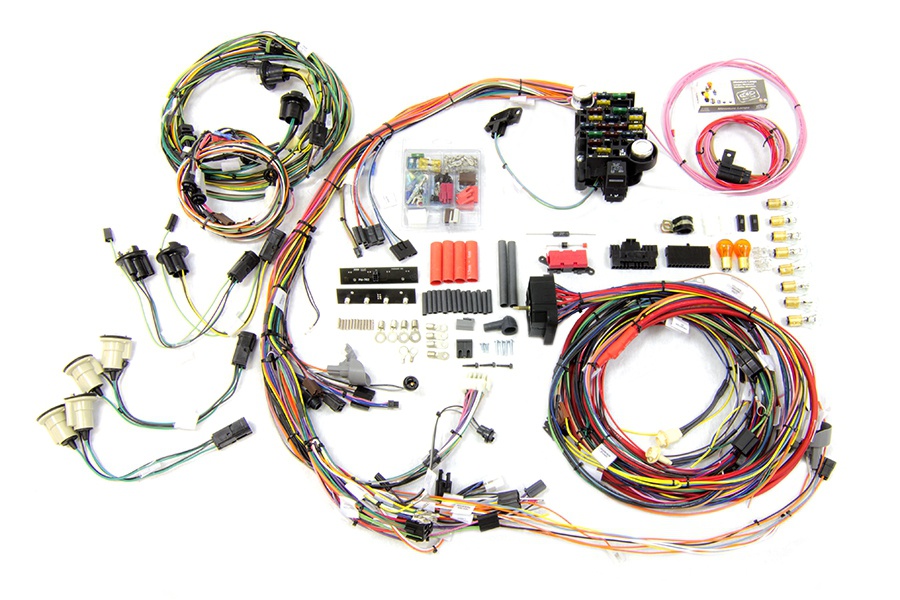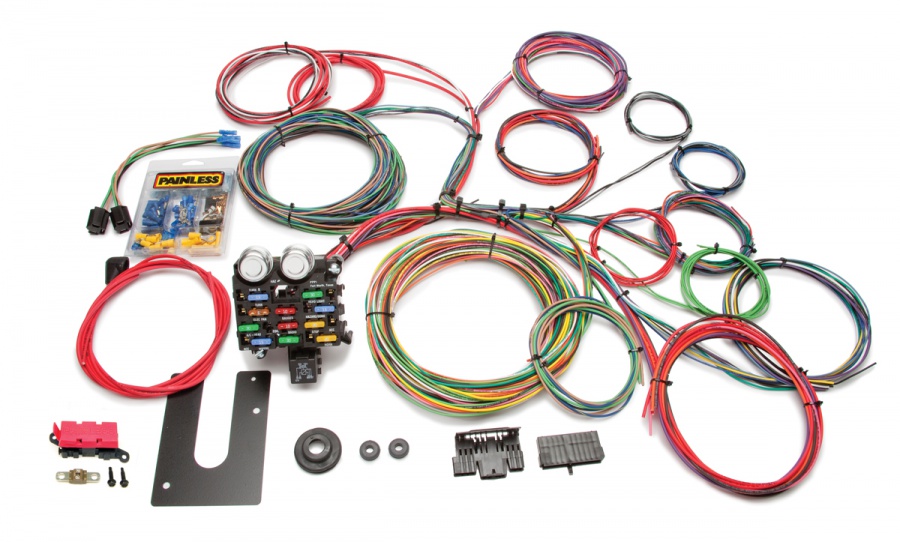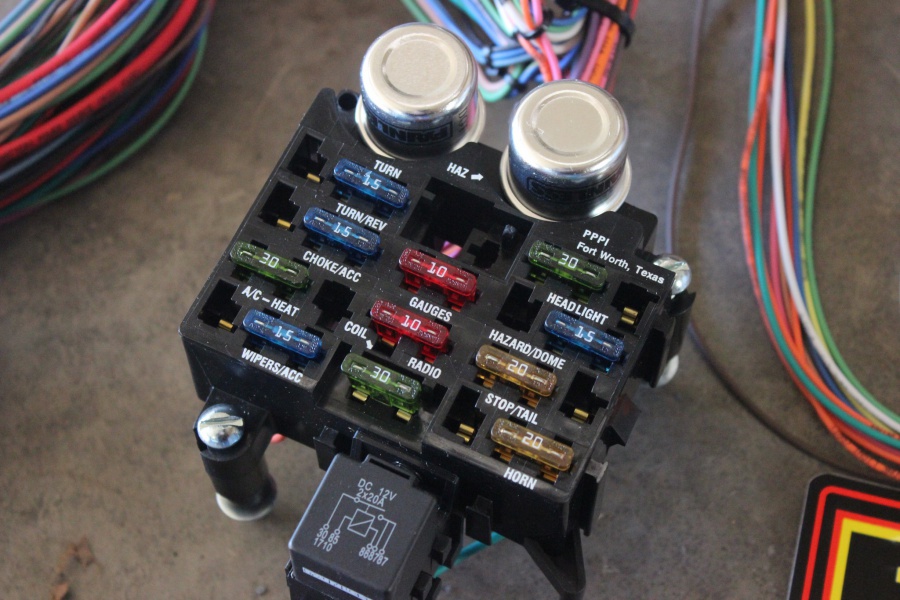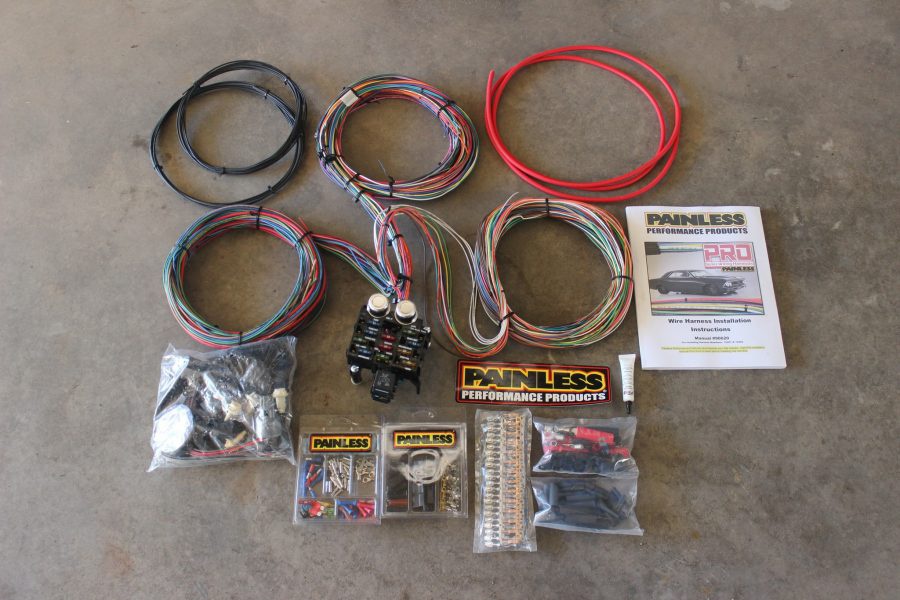What’s The Right Wiring Harness For Your Car?
Wiring a car can be a daunting task even for a professional. Not all wiring is created equal including how they are laid out. Sort of like how some people prefer to buy a complete suspension kit and others prefer to piece things together. We all work differently and wiring is the same way. We see there are several different versions of wiring out on the market and wanted to know the different styles available to help you choose the best one for your car. We contacted Andrew Erichsen of Painless Performance to help explain the different harnesses options.
We break down each one below, but Andrew also had a video to share with us that goes over each wiring harness style as well.
Direct Fit
“The first and foremost is a Direct-Fit harness. These are harnesses that have all the wires pre-terminated so you just have to lay it in the car and pop the connectors into place,” explained Andrew. Generally these are OEM replacements but some of them like the ones Painless Performance offers have upgrades. These upgrades would include mini-blade fuse box and additional circuitry for updated wiring requirements. Out of any wiring harness, these would most likely be the easiest ones to install, especially if you can take out the original harness to see where the new one goes.

The downside to these is that if you want to change how the wires are laid out or change the ends to something different other than stock, you’ll have to cut and modify the harness anyways. The other consideration is that these will use the direct fit factory bulkhead connector. If you wanted to tuck those wires away elsewhere, you won’t have that option.
Universal
The other end of the spectrum is a universal wiring harness. “These are customizable wiring harnesses that can be adapted to fit into just about any car. These give you the most adaptability to wire everything yourself,” continued Andrew. Now this might be a bit intimidating but Painless includes a 1/2″ thick full color instruction book. These books explain what every single wire does, how it needs to be hooked up, and gives you different configurations for different applications. All the wires are labeled with a short description and number – that number you can look up in the instructions.

These are going to offer maximum flexibility to fit any chassis but you’ll need a bit of knowledge and planning to figure out every terminal to get it hooked up properly. These can be ordered with either a grommet or bulkhead so you can fish the wires through anywhere you need.
Pro-Series
Between a Direct-Fit and a Universal harness is Painless’ Pro-Series harness. We actually installed one of these a few years ago in our Project Way-Gone. These harnesses are upgraded from factory with extra circuits, but don’t come pre-terminated like a Direct-Fit harness does but does come with every terminal or connector you’d need. All the wires are terminated at the upgraded fuse box though. The reason you’d want this is so you can lay the wires and tuck them away exactly how you want, not how the factory did it. The wires are extra long which allows you to do a much better job of hiding the wires than the factory. Same as all their harnesses they are color coded and printed with a number inside the instruction manual.


The Pro-Series can also be had with a bulk-head style under hood harness like a Direct-Fit, or a grommet style like the Universal. When we installed our Pro-Series harness we opted for the grommet style so we were able to move the wires over and out of the way a bit and it just looked cleaner to us than this big bulkhead on the firewall. They also offer these in a trunk mount version too where the fuse panel is mounted in the trunk instead of under the dash.
Fuse Box
There’s another style of wiring on the market where it’s the opposite of what Painless offers. In these kits the wires are terminated at the ends for whatever they are connecting to, but unterminated at the fuse panel. This is sort of like a Painless Pro-Series but instead of terminating the ends, you have to terminate them at the fuse box. The downside here is that the fuse box has to be a little bit bigger to accommodate those connections. Again it’s more of a user preference than anything.
As you can see just like how there are many different versions of brakes for your ride, there’s many different versions of wiring harnesses as well. There’s no right or wrong answer, simply a matter of what works best for your application and needs along with your preference.
Source: Painless Performance (800) 423-9696


